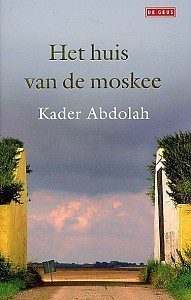Title: Het huis van de moskee
Author: Kader Abdolah
First published January 1, 2005
412 pages, Hardcover
ISBN: 9789044507683 (ISBN10: 9044507680)
Rating: 4.1
Overview
The House of the Mosque by Kader Abdolah is a captivating tale of a family’s legacy in the Iranian city of Senedjan. For generations, the family of Aga Djan has been the most prominent family in the city, residing in the house next to the Djomè mosque – the hub of the Friday prayers.
As the story begins, Aga Djan’s nephew, Alsaberi is the mosque’s imam, and Aga Djan himself holds significant economic power as the head of the bazaar. Abdolah’s novel explores the history of Iran through the eyes of this family, depicting the impact of the tumultuous events on their lives.
As the revolution approaches and eventually breaks out, the family finds itself struggling to hold onto their power and security, as the society around them is plunged into chaos. This is a compelling tale of family, tradition, and the impact of political upheaval on ordinary lives.
About the Author
The writer known as Kader Abdolah is actually Hossein Sadjadi Ghaemmaghami Farahani, an Iranian who writes in Dutch. Abdolah left Iran in 1988 as a political refugee after studying physics at the Arak College of Science.
He now lives in Delft, Netherlands and uses a pen name created from the names of two friends who were killed. Abdolah’s writing has been successful in the Netherlands, with one book in particular propelling him to the top of the bestseller lists.
Editoral Review
Het huis van de moskee, by Kader Abdolah, is a novel that explores the complexities of Iranian society through the lens of a single family. Abdolah, a Dutch-Iranian writer, brings his own experiences and cultural background to bear in this work, resulting in a richly detailed and compelling narrative.
Set in the Iranian city of Senejan in the 1960s and 70s, the novel follows the family of Aga Djan, head of the local mosque, as they navigate the turbulent political and social landscape of the time. The main conflict of the novel stems from the clash between traditional Iranian values and the forces of modernization and secularization that are sweeping the country.
This tension plays out in various ways in the novel, from the conflict between the mosque and the nearby university, to the strained relationship between Aga Djan’s own sons, one of whom embraces the new ways while the other remains loyal to his father’s traditional values. One of the strengths of Het huis van de moskee is its richly drawn characters, who are complex and multifaceted.
Aga Djan, in particular, is a compelling protagonist, a man torn between his duty to his faith and his duty to his family. Through his eyes, we see the changing landscape of Iranian society, and the personal toll that that change takes on those caught in the crossfire.
Another strength of the novel is its evocative setting, which immerses the reader in the world of Senejan and its surrounding countryside. Abdolah’s descriptions of the architecture, cuisine, and clothing of the region are vivid and detailed, and give the book a sense of authenticity and richness.
In terms of flaws or limitations, some readers may find the pacing of the book slow at times, as the plot is driven more by character development and the portrayal of Iranian society than by action. Additionally, while the novel is well-researched and historically accurate, some readers may take issue with Abdolah’s portrayal of certain aspects of Iranian culture, or with his political views.
Overall, however, Het huis van de moskee is a beautifully written and thought-provoking novel that will appeal to readers interested in Iran, Islam, and the clash between tradition and modernity. With its richly drawn characters, evocative setting, and haunting themes, it is a book that will linger in the reader’s mind long after the last page is turned.
4.5/5



